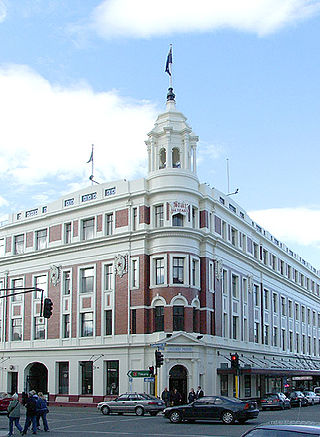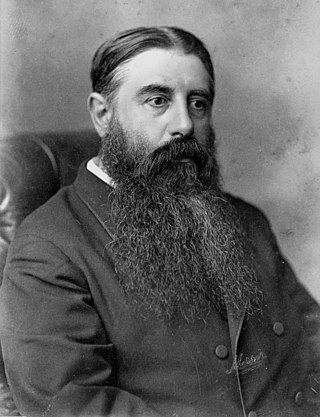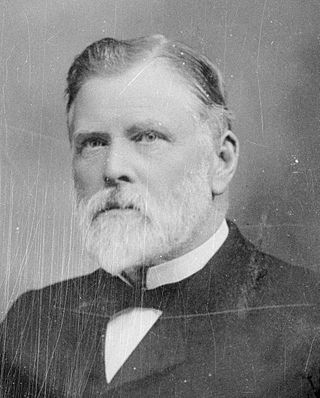
Whanganui, also spelt Wanganui, is a city in the Manawatū-Whanganui region of New Zealand. The city is located on the west coast of the North Island at the mouth of the Whanganui River, New Zealand's longest navigable waterway. Whanganui is the 19th most-populous urban area in New Zealand and the second-most-populous in Manawatū-Whanganui, with a population of 42,500 as of June 2024.

The New Zealand Herald is a daily newspaper published in Auckland, New Zealand, owned by New Zealand Media and Entertainment, and considered a newspaper of record for New Zealand.

The Otago Daily Times (ODT) is a newspaper published by Allied Press Ltd in Dunedin, New Zealand. The ODT is one of the country's four main daily newspapers, serving the southern South Island with a circulation of around 26,000 and a combined print and digital annual audience of 304,000. Founded in 1861 it is New Zealand's oldest surviving daily newspaper – Christchurch's The Press, six months older, was a weekly paper until March 1863.

Stuff Limited is a privately held news media company operating in New Zealand. It operates Stuff, the country's largest news website, and owns nine daily newspapers, including New Zealand's second and third-highest circulation daily newspapers, The Post and The Press, and the highest circulation weekly, Sunday Star-Times. Magazines published include TV Guide, New Zealand's top-selling weekly magazine. Stuff also owns social media network Neighbourly.

The 1875–1876 New Zealand general election was held between 20 December 1875 and 29 January 1876 to elect a total of 88 MPs in 73 electorates to the 6th session of the New Zealand Parliament. The Māori vote was held on 4 and 15 January 1876. A total of 56,471 voters were registered.
The Evening Chronicle, now referred to in print as The Chronicle, is a daily newspaper produced in Newcastle upon Tyne covering North regional news, but primarily focused on Newcastle upon Tyne and surrounding area. The Evening Chronicle is published by njcMedia, a division of Reach plc.

The Whanganui Chronicle is New Zealand's oldest newspaper. Based in Whanganui, it celebrated 160 years of publishing in September 2016. It is the main daily paper for the Whanganui, Ruapehu and Rangitīkei regions, including the towns of Patea, Waverley, Whanganui, Bulls, Marton, Raetihi, Ohakune and National Park.

Whanganui is a New Zealand parliamentary electorate. It was first established in 1860 for the 3rd Parliament and has existed continuously since then.

William Hutchison was a New Zealand politician and journalist. Hutchison and his son George were both Members of Parliament.
The following lists events that happened during 1867 in New Zealand.

John Duthie was a politician and businessman in New Zealand. Originally from Scotland, he came to Auckland in 1863. He set up his own ironmongery in New Plymouth, then Wanganui, and he finally settled in Wellington. In the latter city, he was mayor for one term. He then represented Wellington in Parliament for a total of eleven years. For the last two years of his life, he was appointed to the New Zealand Legislative Council.
The Gisborne Herald is the daily evening newspaper for Gisborne and environs. It was one of only four independently owned daily newspapers in New Zealand but was bought by NZME in 2024.

Archibald Dudingston Willis was a journalist and Liberal Party Member of Parliament in New Zealand. Prior to entering parliament, Willis was a newspaper proprietor for the Wanganui Herald founded by John Ballance.

New Zealand Media and Entertainment is a New Zealand newspaper, radio and digital media business. It was launched in 2014 as the formal merger of the New Zealand division of APN News & Media, APN New Zealand; The Radio Network, is formerly part of the Australian Radio Network; and GrabOne, one of New Zealand's biggest ecommerce websites.
William Alexander Priest, also known as Alec Priest, was a New Zealand doctor and cricketer. He played two first-class matches in the Plunket Shield for Otago in the early 1930s and played in the Hawke Cup for Taranaki and Wanganui. Professionally he was a specialist in the treatment of tuberculosis who worked in a number of New Zealand hospitals and conducted research on a travelling scholarship in the 1950s.

Clarke Charles Netterville Barron was the Chief Reporter of Parliamentary Debates (Hansard) for the New Zealand Parliament for 29 years from 1867. He established the first team of Hansard reporters in New Zealand and set up systems for recording and publishing debates. He was also responsible for the first published compilation of New Zealand Speakers' Rulings and he was Secretary to the Board of Civil Service Examiners for many years.
The Nelson Examiner and New Zealand Chronicle (also known as The Nelson [Daily] Examiner, was the first newspaper published in New Zealand's South Island. It was launched in 1842 by Charles Elliott, a few weeks after New Zealand Company settlers arrived in Nelson. In its early years the newspaper was criticised for its supposed lack of independence and for being merely a mouthpiece for the New Zealand Company.
Christopher Smith Cross was a New Zealand cricketer and businessman who played first-class cricket in New Zealand from 1874 to 1895.

SS Go Ahead was a twin screw-steamer, launched on the afternoon of Saturday 20 April 1867 by Seath and Connell, of Rutherglen, for the Clyde Shipping Company, with a plan to use her in New Zealand coastal trading. She had 30, or 35 hp (26 kW), high pressure engines, and tubular boilers from Campbell & Son's foundry.













